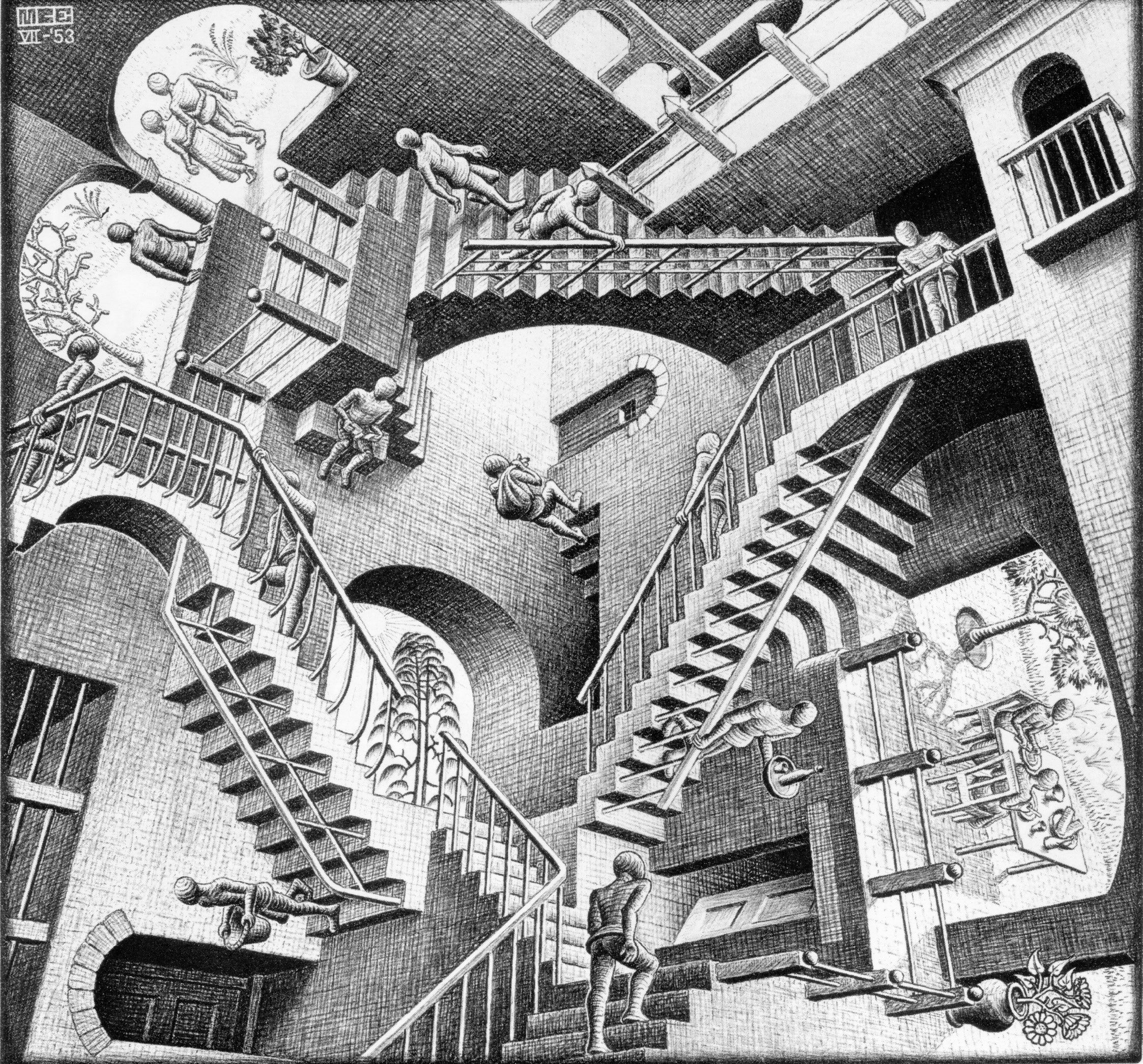" I believe that producing pictures, as I do, is almost solely a question of wanting so very much to do it well"
-MC EscherSometimes, I think I take for granted the power and freedom that we as humans possess. Living in this society that has developed so much can hide the fact that it started with nothing. Before technology, before iPhones and 100-story skyscrapers, and even two-story buildings, there was simply man. And man was an equal to animals, and all of nature. The fact that we have come this far is representative of the unique power in our minds to imagine, and then create. It is truly a privilege to have this opportunity, so I have tried to take advantage of it, simply by creating real representations and expressions of my thoughts and emotions; by creating art. And more specifically, the art form of drawing.
My main goal for this project is to become better at drawing, By this, I mean that drawings of mine will look more believable to the viewer. For my measurable goals, I would like to have four completed drawings by the end of these seven weeks. My first three will be focused on each of the three artists I chose to study: MC Escher, Salvador Dali, and Katsushika Hokusai. I will try to emulate their distinct styles, and create something that reflects their work and also expresses my own personality. The fourth and final piece will be a synthesis of the three artist's styles and my own, which I will hopefully develop over the course of this project.
When one looks at some of the surrealist work of Escher or Dali, the sketches are obviously not believable as a whole. Take Drawing Hands, for example, a lithograph by MC Escher first printed in 1948. This piece depicts two hands, each of which is drawing the other hand. In the real world, this is impossible, since, first of all, both hands have essentially come to life, and, even if this were able to happen, the process would be impossible to start, since, the hands would need to be there in order to draw the other hand. The aspect of this work that really stands out to me is the realism that the hands display. The proportions of the fingers, the shadows, the attention to detail in the wrinkles...this is what I want so very much to do well. This is the type of skill that I would like to achieve, and if not by the end of this project, than some time further in the future.
Over the next seven weeks, I will be looking at three artists, one who has already been half introduced: MC Escher, Salvador Dali, and Katsushika Hokusai. I picked these three solely based on the fact that I really like their work, and it is people like them who really make me want to get better at drawing, so that I can eventually have the ability to sit down, imagine a scene in my head, and then copy that down on to paper, as if my brain were a computer and my hand were a printer, and the pencil was the ink, and my neurons were the electrons in the cord connecting the computer and the printer, and...you get the point.
Anyway, there are two major reasons I admire Escher's work: The subjects of his pictures, and the realistic nature with which they are drawn, as I mentioned before. The two kinds of subjects Escher seems to focus on in a lot of his sketches are illusions and impossible situations, and architecture. One clear example of the former would be Drawing Hands, but there are also a bunch of other ones, such as the tessellations, which are kind of like optical illusions:
Or another one called Reptiles, which is especially interesting because it combines both the previous tessellation style with the drawing-to-real-life effect of Drawing Hands to create a never-ending cycle of crawling lizards:
There are just so many different MC Escher works, each with its own story and personality, but all within a similar manner; they are all drawn in a way that clearly shows Escher's distinct style. And some pieces are related specifically to others, which creates a sort of series or group. I feel like Drawing Hands and Reptiles are both very similar and therefore relate to each other. In the same way, I feel like MC Escher's illustrations of buildings also share a common essence.
One of possibly his most known works would be Relativity, in which Escher creates a scene where your understanding of the picture, and this drawn world, is relative to your perspective, just like how the figures' understanding of the staircases and gravity is relative to their position and perspective.
This week, I plan to learn about MC Escher's hidden meaning behind these pieces. Was it simply out of a love for illusions? Or are drawings like this one portraying once abstract concepts in a physical way?



